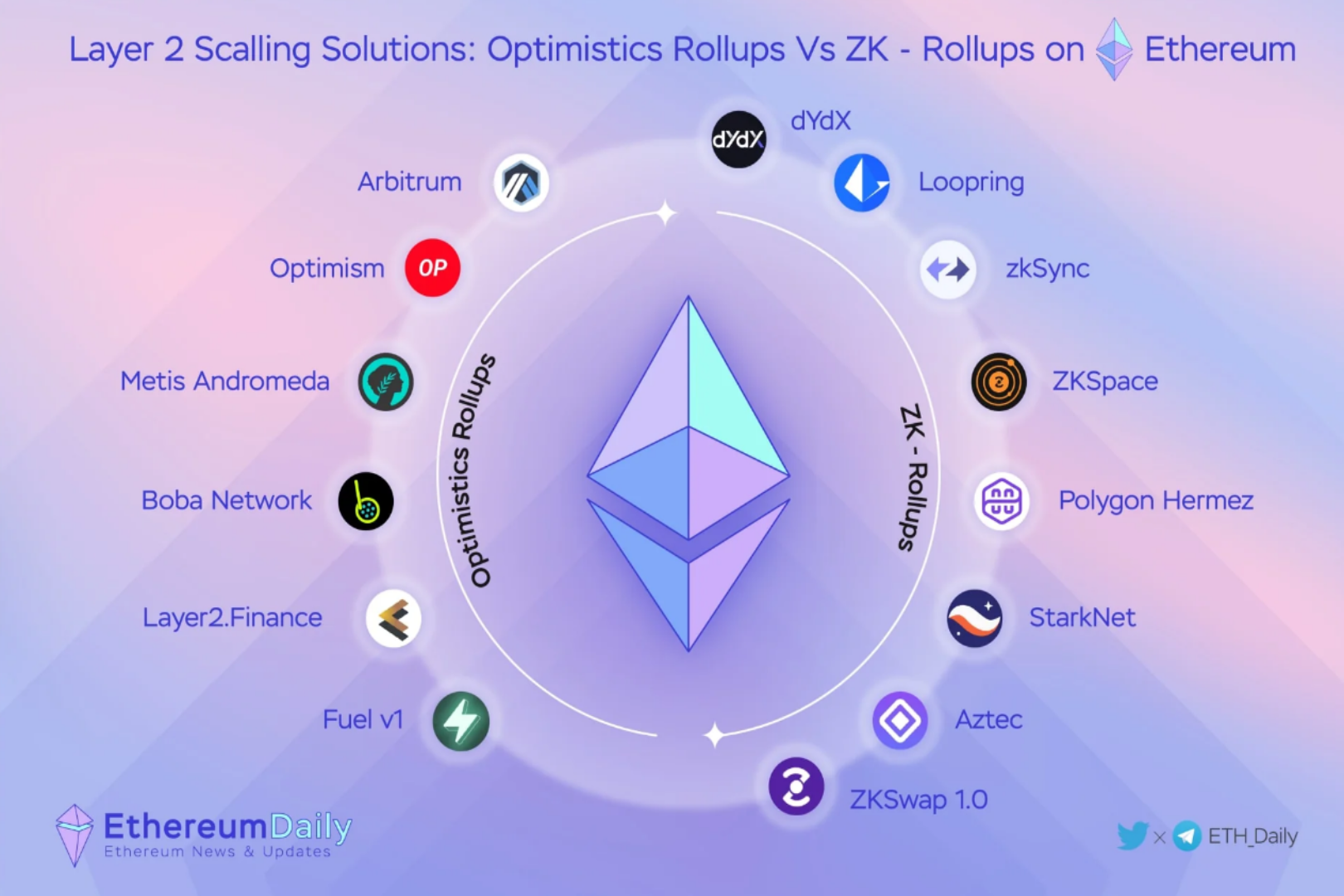Editor's Note: This article comes fromChain news (ID: chainnewscom)Editor's Note: This article comes from
Chain news (ID: chainnewscom)
Chain news (ID: chainnewscom)
,Author: Brother Xiaomao@连闻、coffee@First Class Cang, reprinted by Odaily with authorization.
2020 is a critical year in the field of decentralized storage. In the next two months, heavyweight decentralized storage projects including Filecoin and Storj will release product progress. The track and core projects in this field are worthy of attention.
The storage-as-a-service business model has a long history. Amazon started to launch Amazon Web Services (AWS) in 2006, leasing its own servers and storage space to users, reducing the cost of creating and managing server infrastructure for developers.
With the evolution of time, although traditional cloud storage services have continuously improved their functions and become more affordable, they have encountered a bottleneck in recent years, that is, they cannot solve frequent data leakage problems, service limitations, and operator outage risks. Therefore, in order to fundamentally solve the shortcomings of the traditional storage business model, the concept of decentralized storage has gradually emerged.
Decentralized Storage Network (DSN) is a storage business model that uses distributed storage technology to store files or file sets in pieces on the storage space provided by the supplier.
The first type is currency projects that use hard disk space as proof of computing power to mine and benchmark against Bitcoin. This type of project is mainly represented by PoC (Proof of Capacity) consensus projects including Burst and BHD;
The second is to use effective storage as computing power to mine to earn rent. In fact, it is an application project that mainly provides storage services, such as Filecoin, Storj, Sia and other projects.
Projects that adopt the consensus mechanism of PoC (Proof of Capacity) projects are mainly benchmarked against Bitcoin, with energy saving, more decentralized, and fairer mining as core competitiveness, aiming to become a better cryptocurrency. The decentralized cloud storage project we are going to talk about in this article refers to the second type of storage application project, and 2020 is also a critical year in this field.
secondary title
Storj, a decentralized storage network based on Ethereum, announced that it will release an official version in the first quarter of this year, and announced a series of new features that can be expected. The high-profile mega-project Filecoin has been postponed many times before, and now it has completed the first stage of the testnet. The second stage of the testnet is about to start, and it is planned to launch the mainnet between March 23 and April 24.
First of all, 2020 is a critical year in the field of decentralized storage. Technology development in this field has been based for many years. Although there have been many bounces before, the current technology has matured. Heavyweight decentralized storage projects including Storj have released product progress. The competition of these accumulated projects is also expected to drive the enthusiasm of the entire field and combine with other blockchain applications to create more new use cases.
Filecoin
Secondly, the decentralized storage business model is clear and the market size is growing. For miners, the entire market is profitable. If large-scale commercial use can be achieved in 2020, and with the development of the Web 3.0 ecosystem and the emphasis on privacy and user data ownership, this year will become the year of technological breakthroughs and product landings in the field of decentralized storage. Below we select Some noteworthy projects, and analyze their strengths and weaknesses separately.
secondary title
Our Analysis of Decentralized Storage Projects to Watch
Filecoin has received more than US$250 million in financing since its launch in 2017. Filecoin may be the tail of the phoenix in 2019 and the leader in 2020. It plans to launch the mainnet in the first quarter of 2020. It is also the most anticipated in the blockchain world this year. one of the major events. Filecoin is expected to drive the enthusiasm of the entire decentralized storage track.
We analyze the advantages of the project:
The Filecoin network is mainly composed of independent data storage miners, retrieval miners, and storage service clients who employ miners. Storage service clients can be hired through two distributed, verifiable, and incentivized markets: the storage market and the retrieval market. miner. Filecoin and its complementary distributed network transport protocol IPFS are both developed by Protocol Labs.
As a decentralized data storage network, Filecoin serves as the storage layer of IPFS and the incentive layer of the IPFS protocol. IPFS is the application layer of the entire system, and the two protocols share multiple functional modules.
IPFS mainly targets the HTTP protocol, aiming to supplement or even replace the Internet's Hypertext Transfer Protocol (HTTP). The vision of IPFS is very ambitious, hoping to serve as the storage layer of Web 3.0 and establish a new Internet architecture. At present, more than 5 billion files have been uploaded to IPFS, and more than 100 blockchain projects use IPFS to store data and files, which has become one of the important infrastructures of the decentralized network.
image description
Projects using the IPFS protocol, source: The Block
Filecoin bid matching mechanism is conducive to reducing the price of storage services
Filecoin miners participate in network governance and compete for block packaging rights by providing storage space and using effective storage as computing power. The network has two types of miners, one is retrieval miners and the other is storage miners. Retrieval miners earn retrieval fees, while storage miners earn storage rent and block packaging rewards. Taking the mechanism of Filecoin as an example, the entire network pays the hardware cost of miners through block rewards to provide storage services, and the storage services use bidding to match transactions. This bidding matching mechanism is conducive to reducing the price of storage services.
We analyze the disadvantages of this project:
Filecoin mining hardware requirements are high, and the participation of ordinary users cannot be guaranteed
The Filecoin team previously disclosed the hardware information of users participating in its testnet. Currently, it requires at least 128 GB or even 256 GB of memory to pack 32 GB sectors. Although this requirement does not represent the hardware standard of the final main network, as far as this hardware requirement is concerned, it is impossible for all personal computers to participate in mining, and the entire network has the risk of tending to the competition between major computer rooms and data centers that are centralized.
In addition, in terms of the download speed of the current IPFS network, its performance and speed need to be further improved in order to meet the requirements of enterprise-level services.
At present, the Filecoin test network is running stably. According to the Filecoin test network, as of February 5, 2020, the block height is 42511, the average block time is 47 seconds, and the total computing power of the entire network is 1.2 PiB. According to the latest roadmap released by Filecoin, the first phase of the test network will be completed on January 17, 2020. This phase will mainly perform some basic functional tests, optimizations and bug fixes on Filecoin.
Data Sources:https://stats.testnet.filecoin.io/
Previously, Filecoin had planned to conduct formal testing, verification and security audits of the Filecoin network during the second phase of the testnet from January 20 to March 20, 2020, and will start trusted settings, release and update the mainnet hardware test configuration, and release Developer Tools Collaboration Pack. However, considering the Chinese New Year, the project later revised the release time of the second phase of the testnet and proposed that the second phase of the testnet would not be released during the Chinese New Year. Filecoin stated that the specific launch time of the second phase of the testnet will depend on the length of the interoperability test between go-filecoin and lotus implementations, and the specific launch time is yet to be determined.image description》。
Storj
Data Sources:
To learn more about participating in the Filecoin testnet, you can check out this link news interview with the Filecoin team: "
Listen to the Filecoin team's response to the core issues you need to know about the launch of the testnet
Founded in July 2017, Storj is an Ethereum-based distributed cloud storage protocol developed by the for-profit company Stroj Labs. Storj aims to build a decentralized cloud storage platform that is free from censorship, monitoring, and non-stop. By utilizing idle hard disks and bandwidth, consultation, data transmission, and verification of data integrity and availability can be performed between any nodes on the P2P network. Retrieve data and store it.
We analyze the advantages of the project:
Storj's model is more commercial and more suitable for enterprise-level storage business
Although Storj provides storage services based on blockchain technology, the project directly targets Amazon's S3 object storage service, hoping to provide enterprises with services that are comparable to or even surpass Amazon's storage in terms of performance indicators. If the project goes well, Storj will become one of the most commercially competitive decentralized storage platforms.
Each milestone of Storj is mainly based on quantitative indicators. Only when these indicators are reached, Storj can enter the next milestone. Storj's storage principle is to first split the uploaded file into 64M data blocks, and then divide the 64M data blocks into 80 data blocks after 2.7 times the redundancy. These 80 data blocks will be distributed among 80 nodes in the network. In this way, as long as any 29 of the 80 nodes are online, the file can be completely restored. Taking the file read rate indicator as an example, the goal of the official version of Storj is to achieve a file read rate of 99.9999999%.
Storj said that there are currently more than 4,800 storage nodes active on the network. After the new start of the V3 version, the total global storage capacity has exceeded 10 PB. If Storj reaches the official version this year, the number of storage nodes will reach 5,000, and the speed of file upload and download will be equal to that of Amazon storage. For specific indicators, please refer to the official blog post:
Storj is more suitable for ordinary users to mine and participate, and it is more suitable for integrating idle resources to expand the ecology
Storj users can collect rent by providing storage space, or pay rent by renting storage space. Most small devices, such as NAS, personal computer, and Raspberry Pi, can install Storj nodes and rent out their own idle space, which is suitable for building an extremely decentralized cloud storage network and suitable for civilian mining. Storj claims to be the Uber of decentralized storage, which can reorganize social idle resources into usable commercial products.
At the same time, Storj officially launched the "Storj Labs Open Source Partner Program". If an open source software vendor develops an interface to access Storj, and some users use Storj services through its open source software, they will get a share of Storj's revenue. At present, the official has not announced the specific share ratio, but this move can encourage open source software developers, thereby expanding Storj's application ecology.
We analyze the disadvantages of the project:
The Storj storage network architecture is centralized in a certain sense
At present, the salary of Storj miners is paid in the first week of each month, which is paid manually by the official team. At the same time, there is a third-party role in Storj's network structure responsible for coordinating all storage contracts between storage users and storage nodes - trusted Satellite. Of course, it needs to be specially explained that this kind of "Satellite" is not a satellite flying in the sky, but a service cluster for content retrieval. Each Satellite is equivalent to acting as a retrieval miner in the IPFS network.
Since Storj is open source, everyone can apply to run Satellite in the future, and Satellite may have the risk of a single point of failure, which means that if a single Satellite fails, all data stored through the Satellite will be inaccessible.
At present, Storj solves this problem by splitting the Satellite into multiple services. Although the probability of occurrence is low, there are still inevitable theoretical risks. At the same time, Storj will also run a set of specific trusted Satellites called Tardigrade Network, which aims to provide customers with a guaranteed service level agreement (SLA) for data availability and durability.
Storj's token incentive mechanism may affect the token price at the beginning of the project
Storj supports users to use credit cards or Storj tokens to pay storage service bills, and will take 40% of the revenue as team salaries and open source partner program expenses, and the remaining 60% will be converted into Storj and distributed to miners. When the user pays with a credit card, the 60% of the funds are not purchased from the market to distribute Storj tokens to the miners, but are exchanged for Storj from the team's reserve tokens and distributed to the miners.
At present, there are still about 280 million Storj tokens reserved by the team. Only after the conversion of these 280 million tokens is completed, it is possible to directly buy Storj tokens from the market and distribute them to miners, which also determines the value of Storj tokens. Prices may not be effectively incentivized for a period of time.
Operation / development status
The current Storj product roadmap will make significant progress this year. Storj announced that it will release the official version of the product in the first quarter of this year, and announced a series of new features that can be expected, including:
More new platforms for storage nodes will be supported, including adding native support for nodes running on Qnap, Synology, and Western Digital NAS devices, as well as support for FreeNAS and FreeBSD.
Arweave
For developers, Storj has increased the number of places on the waiting list. In the developer referral program, active developers can earn storage and bandwidth credits by recommending other developers to the platform.
Beta accounts activated from the waitlist will get 25 GB of storage and bandwidth per month for free, and in production, the first 10,000 developer accounts will get a 1 TB credit that includes 30 days worth of storage and bandwidth.
An upcoming release will allow NAS operators to easily add unused NAS capacity to the network and will support backing up NAS hardware to Tardigrade storage.
Arweave is a protocol that focuses on one-time payment and permanent file storage. Arweave provides a storage solution called Permaweb permanent network, which uses the immutable feature of the blockchain to directly write the content into the block for storage, so as to realize the so-called permanent storage function.
The project uses Proof of Access (POA) to motivate miners to store history forever and share it as required. While miners get new block rewards, they also get rewards for storing random old blocks in the chain. It means that the more blocks the miners store, the more rewards they get.
The mining of Arweave adopts the algorithm of RadomX, and at the same time introduces the parameter of block integrity rate on this basis. Due to the characteristics of Arweave, its block size must increase exponentially with the use of the network. Considering the increasingly expanding block data, future nodes may not be able to store complete block data. Therefore, the introduction of block The complete rate parameter does not require all nodes to store complete block data, and competes for block packaging according to the number of blocks stored by nodes.
Advantages of our analysis projects:
Arweave focuses on one-time payment and permanent file storage, filling the gap in the market
Unlike IPFS, which focuses on decentralized storage, and Storj, which focuses on enterprise storage services, Arweave focuses on permanent storage, which complements specific market needs. Fundamentally speaking, Arwaeve solves the problems of restricted freedom of speech, excessive censorship, and easy The problem of tampering.
For specific applications, especially in areas with more restricted network access, Internet users do not need to download new browsers, and can permanently store digital files such as web pages, emails, and social media posts on the blockchain through the Arweave browser plug-in And data, keep the history completely and truly.
At the same time, Arweave can also help organizations store complete, non-tamperable knowledge and information, such as for storing climate change databases. Currently, Arweave is working with the National Oceanic and Atmospheric Administration to permanently store ongoing carbon dioxide measurements to test Permaweb.
Arweave said that it will provide data storage costs similar to Moore's Law-style decline, users only need to pay a one-time upfront payment (about half a cent per megabyte), and the interest generated by overpayment will help subsequent storage services continue to decline. Arweave founder Sam Williams said, "In recent years, Arweave data storage costs have dropped by an average of 30% per year. As long as the rate is not lower than 0.5% (according to today's storage needs), the decentralized network can still afford the cost. Today's Payments will cover the cost of storage space for the next 200 years."
Disadvantages of our analysis project:
The actual application scenarios are narrow and not easy for developers to use
Arweave features can be applied to data preservation based on HTML5 webpages, and to establish a decentralized H5-APP. However, in actual use, the application scenarios for issuing this certificate are relatively narrow. Currently, we can see that the most stored on Arweave The most important thing is the screenshot of some anti-government remarks on Twitter. The increase of explicit anti-government applications is worrying.
At the same time, the characteristic of Arweave is that it can never be tampered with, which is particularly difficult in program development, because the program uploaded by developers to Arweave must be free of any errors. If there is an error, even if it is a punctuation, the previously uploaded content will be invalidated. , need to re-upload, will inevitably cause a lot of useless garbage accumulation. In addition, due to the openness of the blockchain, the content uploaded by Arweave is open to the whole society, and it is not suitable for uploading personal content.
While the team says Arweave is compatible with IPFS, developers building on IPFS can seamlessly transition to Arweave. However, if the developer develops based on Arweave, there will be a problem that they cannot directly upgrade their own HTML5 APP. The developer must directly abandon the old version and re-upload the new version, which will inevitably cause some inconvenience.
Arweave mainly focuses on one-time payment and permanent file storage. This model is relatively simple, and there is a certain risk that homogeneous projects will use the same storage concept and start a price war.
Operation / development status
The Arweave project was founded in 2017, and the current Arweave mainnet was launched in June 2018. According to Arweave, there are currently more than 100 permanent applications built on Arweave, including Weavemail, a permanent email storage client that writes email content into blocks through transfers.
image description
Weavemail user interface





